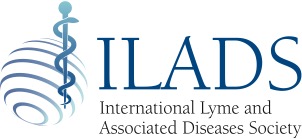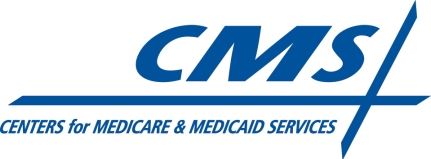This article is in two parts.
Part 1 outlines the use of antibiotics in the United States today for both man and beast, and how that may relate to the development of antibiotics resistant to ALL our antibiotics.
Part 2 explores how this proposed rule may relate to the treatment of chronic Lyme disease in the United States.
Part 1 – Stewardship of antibiotic use in the United States – hospital and outpatient
 The International and Lyme Associated Diseases Society (ILADS) recently published a commentary on the newly-proposed CMS Regulation on Antibiotic Stewardship. The main question for Lyme patients is, of course, whether these regulations will serve to curtail the use of long-term antibiotic treatment for Lyme disease based on ILADS guidelines as published in the National Guidelines Clearinghouse in 2014.[1]
The International and Lyme Associated Diseases Society (ILADS) recently published a commentary on the newly-proposed CMS Regulation on Antibiotic Stewardship. The main question for Lyme patients is, of course, whether these regulations will serve to curtail the use of long-term antibiotic treatment for Lyme disease based on ILADS guidelines as published in the National Guidelines Clearinghouse in 2014.[1]
 What do the proposed regulations entail?
What do the proposed regulations entail?
According to the article in the Federal Register[2] published 06-16-2016, this is the Executive Summary of the proposed rule on antibiotic stewardship:
Executive Summary
These proposed changes would modernize hospital and critical access hospital (CAH) requirements, improve quality of care, and support HHS and CMS priorities. We believe that benefits of the proposed revisions would include; reduced incidence of hospital-acquired conditions (HACs), including reduced incidence of healthcare-associated infections (HAIs); reduced inappropriate antibiotic use; and strengthened patient protections overall. Specifically, we propose to revise the conditions of participation (CoPs) for hospitals and CAHs to address:
- Discriminatory behavior by healthcare providers that may create real or perceived barriers to care;
- Use of the term “Licensed Independent Practitioners” (LIPs) that may inadvertently exacerbate workforce shortage concerns;
- Requirements that do not fully conform to current standards for infection control;
- Requirements for antibiotic stewardship programs to help reduce inappropriate antibiotic use and antimicrobial resistance; and
- The use of quality reporting program data by hospital Quality Assessment and Performance Improvement (QAPI) programs.
The relevant section in the Rule is found in section E, Infection Prevention and Control and Antibiotic Stewardship Programs (§ 482.42). I quote a few selections:
The Department of Health and Human Services is particularly concerned about HAIs, as they are a significant cause of morbidity and mortality in the United States. [HAI = Hospital Acquired Infection].
In 2001 it is estimated that 75,000 inpatients died with [not of] HAIs.[3] Of these infections, the most prevalent were device-associated infections (25%), pneumonia 22%, surgical-site infections 22% and GI infections 17%, mostly due to Clostridium difficile.
 Clostridium difficile results from overgrowth of this pathogenic organism due to eradication of healthy bacteria in the GI tract by antibiotics, resulting in intractable and sometimes fatal diarrhea. C diff is resistant to most antibiotics in current use. Patients treated with short courses of antibiotics (less than 3 days) were less likely to develop antibiotic-associated diarrhea than patients who were treated for a longer time.[4] Strains of Bacillus species are protective against overgrowth and against the toxin secreted by C diff.[5] It is estimated that C diff associated diarrhea costs in excess of $1.1 billion per year.[6]
Clostridium difficile results from overgrowth of this pathogenic organism due to eradication of healthy bacteria in the GI tract by antibiotics, resulting in intractable and sometimes fatal diarrhea. C diff is resistant to most antibiotics in current use. Patients treated with short courses of antibiotics (less than 3 days) were less likely to develop antibiotic-associated diarrhea than patients who were treated for a longer time.[4] Strains of Bacillus species are protective against overgrowth and against the toxin secreted by C diff.[5] It is estimated that C diff associated diarrhea costs in excess of $1.1 billion per year.[6]
Nowhere in the document published in the Federal Register is there mention of the word “probiotics” or even of the species “bacillus”. Prevention is mentioned 194 times, but only in the context of “prevention program”, not of actual prevention strategies. The document talks about “infection prevention and control practice” according to national guidelines, but not anything about prevention guidelines.
The report also appears to follow along the tract of allopathic “silo” medicine – there is no mention of antibiotic use in livestock, or how that might conceivably relate to favoring of antibiotic-resistant organisms in the human population which consume the meat of those antibiotic-treated animals. Antibiotics are given to livestock to improve their “feed efficiency” – i.e. how fast they convert feed to marketable meat.[7] The Union of Concerned Scientists has challenged this feedlot-associated practice.[8]
An article published in the New England Journal of Medicine in 2002 described four patients whose community-acquired pneumonia (caused by the common Streptococcus pneumoniae was resistant to one of the fluoroquinolones (Cipro, Levaquin, etc) recommended and generally used as first-line treatment for pneumonia, in accordance with guidelines developed and published by the Infectious Diseases Society of America (IDSA).[9]
Fluoroquinolones are commonly given to feedlot animals at subtherapeutic levels to increase their market weight. The veterinary and microbiology literature are full of articles describing the development of resistance in common bacterial organisms to antibiotics commonly prescribe at subtherapeutic levels to enhance the growth of feedlot animals.[10] One article even expresses concern at the potential for development of antibiotic resistance.[11]
And yet, none of this information appears in the literature relating to antibiotic resistance of organisms in human infections.
Could it be that we are simply unaware of the association?
Could it be that we choose to ignore what is happening with the animals that we eat, under the assumption that what we eat has no relationship to the state of our health?
Could it be that the animal feed industry is reluctant to have the information widely publicized?
The dots are not that far apart or so difficult to connect.
What can we who live in this world of antibiotic resistant supposedly friendly organisms do to protect ourselves?
First – eat meat that has not been treated with antibiotics. Read the labels on your packages of meat. For help with what these labels mean, the Environmental Working Group has a helpful online article, Decoding Meat + Dairy Product Labels.

Second, learn what the labels on your packages of meat actually mean. The EWG web page has all this helpful information in an easy-to-decipher format.
If meat has an “organic” label, you can be pretty sure that it was raised without antibiotics, and only  fed organically grown feed (no animal byproducts). However, you should also realize that in the regulatory climate of the US Government, “organic” means that the food must contain at least 70% organic ingredients. Not 100%. For more information on this subject, the Food Alliance has a good online article here.
fed organically grown feed (no animal byproducts). However, you should also realize that in the regulatory climate of the US Government, “organic” means that the food must contain at least 70% organic ingredients. Not 100%. For more information on this subject, the Food Alliance has a good online article here.
If it says only “grass fed”, it has to have been grass fed for at least part of its life – but not necessarily its whole life. It may have been fed commercial feed until a short time before butchering. If it says 100%
grass fed beef, it may have been fed grass for its whole life. If it has a “Food Alliance label, you are safe. The animal has been grass fed its whole life.
Part 2 – how does this relate to patients with chronic Lyme disease?
The regulations prohibit discrimination on the basis of disability.
Lyme disease is not listed specifically in the Social Security website’s blue book which lists 14 organ systems with symptoms qualifying for disability.
If a patient qualifies in any organ system for disability according to the SSA blue book, then health care providers are obligated to provide care through accommodation of that disability.
As long as the providers of care acknowledge the ILADS treatment guidelines published on the National Guidelines Clearinghouse website,[12] there should be no problem getting antibiotic therapy initiated or continued while a Lyme patient is hospitalized.
It is to be hoped that the new regulations will be interpreted according to the currently published ILADS guidelines, and not according to the (now outdated and no longer published) IDSA guidelines.
For more information, please contact our office at 480-240-2600 to speak with our patient care coordinator about your condition, and whether we can help you regain your health.
Key words: antibiotic stewardship, Lyme disease, antibiotic resistance
[1] https://www.guideline.gov/summaries/summary/49320/evidence-assessments-and-guideline-recommendations-in-lyme-disease-the-clinical-management-of-known-tick-bites-erythema-migrans-rashes-and-persistent-disease
[2] https://www.federalregister.gov/articles/2016/06/16/2016-13925/medicare-and-medicaid-programs-hospital-and-critical-access-hospital-cah-changes-to-promote
[3] Magill SS, Edwards JR, Bamberg W et al. Multistate Point Prevalence Survey of Health Care-Associated Infections. NEJM 2014; 370:1198-208
[4] Wiström J, Norrby SR, et al. Frequency of antibiotic-associated diarrhoea in 2462 antibiotic-treated hospitalized patients: a prospective study. J. Antimicrob. Chemother. (2001)47 (1): 43-50.doi: 10.1093/jac/47.1.43
[5] Ripert G, Racedo SM et al. Secreted Compounds of the Probiotic Bacillus clausii Strain O/C Inhibit the Cytotoxic Effects Induced by Clostridium difficile and Bacillus cereus Toxins. Antimicrob. Agents Chemother. June 2016 vol. 60 no. 6 3445-3454
[6] Kyne L, Hamel MB et al. Health Care Costs and Mortality Associated with Nosocomial Diarrhea Due to Clostridium difficile. Clin Infect Dis. (2002) 34 (3):346-353. doi: 10.1086/338260
[8] http://www.ucsusa.org/food_and_agriculture/our-failing-food-system/industrial-agriculture/prescription-for-trouble.html#.V8GnjPkrJhE
[9] Bartlett JG, Dowell SF, Mandell LA, File TM Jr,Musher DM, Fine MJ. Practice guidelines for the management of community-acquired pneumonia in adults. Clin Infect Dis 2000;31:347-382
[10] Alexander TW, Yanke LJ et al. Effect of Subtherapeutic Administration of Antibiotics on the Prevalence of Antibiotic-ResistantEscherichia coli Bacteria in Feedlot Cattle. Appl. Environ. Microbiol. July 2008 vol. 74 no. 14 4405-4416
[11] Scott A. McEwen and Paula J. Fedorka-Cray. Antimicrobial Use and Resistance in Animals. Clin Infect Dis. (2002) 34(Supplement 3): S93-S106.doi: 10.1086/340246
